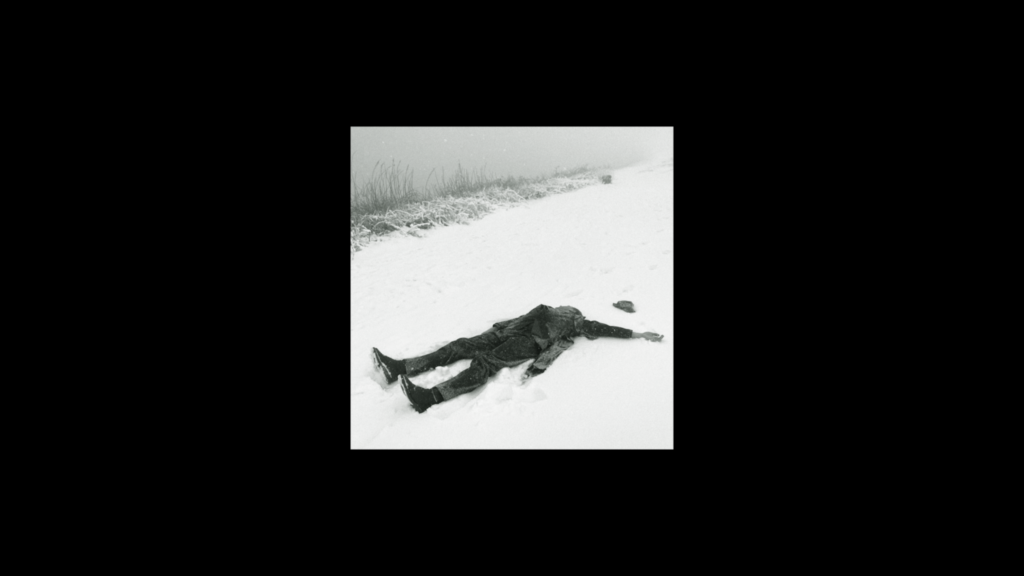Snow White Is Tired

Stanley Schtinter as Robert Walser.
“I know the story well,” says the Snow White of Robert Walser’s Schneewittchen, “about the apple, the coffin. Be so kind as to tell me more. Why does nothing else come to mind? Must you hang on to these details? Must you forever draw on them?” In Stanley Schtinter’s 2024 adaptation of Walser’s 1901 dramolette, characters from the Grimm fairy tale exhaust themselves and their images in a recounting of the story in which they are inscribed. The film is a complete performance of the English translation of Walser’s text, which picks up where the Grimm tale leaves off. The queen, who has tried to kill Snow White twice, wants her daughter to forget everything. Under her orders, the hunter, her lover and Snow White’s would-be assassin, reenacts the attempt on Snow White’s life. There is discussion of the desire for death, springtime, fresh garden air, kisses, snow, and sleep. The characters chastise each other for telling fairy tales, rehearsing scripts, making use of “gesture and technique.”
Schneewittchen is a shot-for-shot remake of another experimental adaptation of Walser’s text, João César Monteiro’s Branca de Neve (2000). As in Monteiro’s version, the drama takes place in complete darkness, against a sonic ambience of rain, wind, and birdsong. We hear, but do not see, the characters. Punctuating the darkness: brief shots of a blue sky, sometimes clouded, sometimes unclouded, blinding in the black theater, scenic breaks in which we find ourselves, with Snow White, “immaculately watching an immaculate sky.” But Sean Price Williams’s skies are less saturated than Monteiro’s. The environmental sound, by the artist Joshua Bonnetta, is louder in the mix. The flute and piano are gone.
Schtinter’s version premiered in New York on the occasion of Disney’s 2025 live-action remake of their 1937 animated classic Snow White and the Seven Dwarfs. In the spirit of Disney, Schneewittchen has also been merchandised: at Anthology, Schtinter cheekily offered Schneewittchen snow globes (empty) and Schneewittchen T-shirts (blank). Like a proper Hollywood remake, Schneewittchen has an A-list cast (Julie Christie is the queen; Stacy Martin is Snow White; Hanns Zischler is the hunter; and Toby Jones is the prince). These glossy professionals deliver blocks of dispassionate dialogue as though shrink-wrapped, their high-budget polish contrasting humorously with the film’s starkness.
Aside from sky and the red curtain of the opening and ending credits, the sixty-seven-minute film contains only two other images. The film opens with a sequence of black-and-white stills of Robert Walser lying dead in the snow outside the Switzerland asylum where he’d been living, a scene originally captured by a police photographer on Christmas, 1956. His unseeing face turned skyward, Walser is the picture of his own Snow White, who “long[s] for that open coffin, laid out as this frozen image.” Where Monteiro uses the widely circulated photographs of Walser’s real corpse, here Schtinter himself plays Walser, restaging the “dear winter scene” on location in Herisau. The effect is slightly comic, Schtinter’s younger figure slightly too photogenic, too clean. Finally, Monteiro’s film closes with a beguiling shot of the director standing in front of a tree; Schtinter shows us only a tree.
“Rather than look, I’d rather hear,” says Snow White. “I’m speechless,” replies the prince, “imageless at such an image.” “Woe unto me that I must hear,” says Snow White. “Woe unto us that I must see,” replies the prince. In his third-order reenactment of the Grimms’ tale, Schtinter joins Monteiro and Walser in questioning our compulsion to endlessly repeat the same story, forever draw on the same details. In such a state of exhaustion, it might be better not to see or hear anything at all. But the film is not a plain negation, a repudiation of the cinematic culture of the remake, and although it participates in what might appear to be the degradation of its sources, it’s not parody. Schtinter remakes with careful ambivalence. He finds for us a place between speechlessness and imagelessness, between empty speech, exhausted image, and the new. In Walser’s text, Snow White ultimately accepts the queen and the hunter’s story. “Say what you want. I believe you.” Refusal or affirmation? Snow in a silent winter world.
Alec Mapes-Frances is a writer and designer living in New York.
Copyright
© The Paris Review
